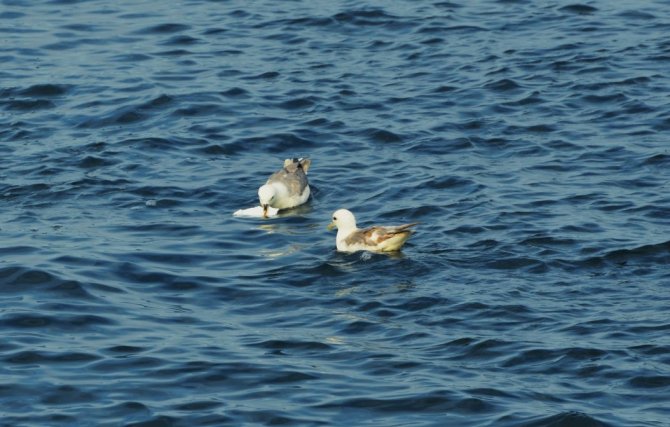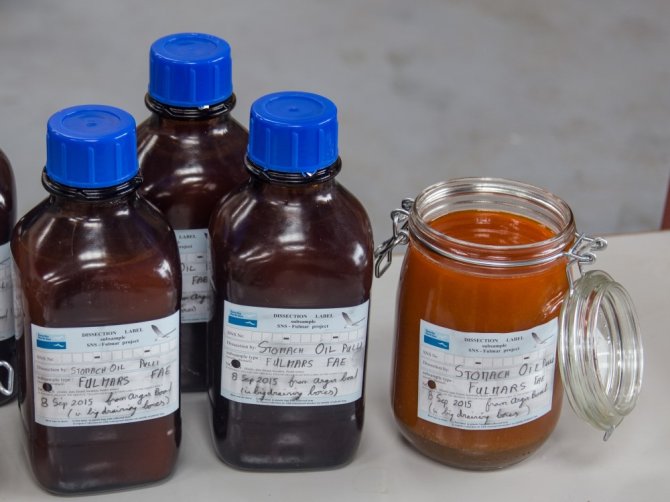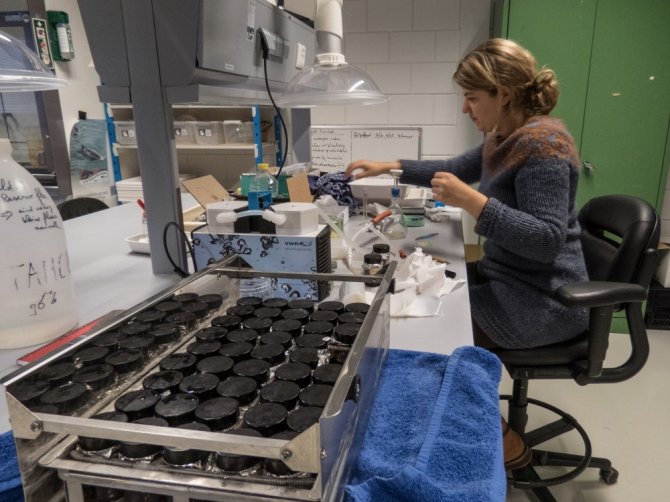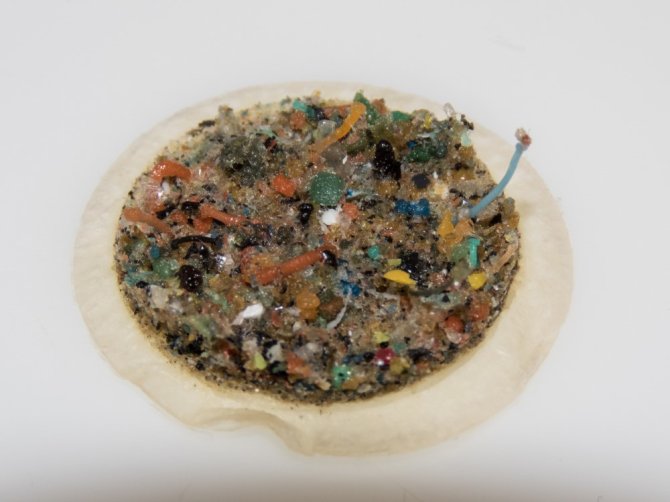
Neuigkeiten
Transfer of toxic additives from plastic to fulmars
Plastic contains many chemical substances, so-called additives, enhancing specific plastic properties. Common additives include plasticizers, UV blockers, colorants and flame retardants. Some of these substances are known for being toxic, carcinogenic or endocrine disruptive and some of these additives can leach from the plastic into the environment. To protect humans, strict regulations are implemented to minimize the amount of additives, specifically in plastic food packaging.
Plastics at sea
If discarded, these additives are taken to the ocean along with the plastic. Wave action and sunlight break larger plastic items into smaller ones, readily available for seabirds and other marine organisms to ingest. It remains unclear why marine organisms ingest plastics, and there is little known about the effects the ingestion of plastics may have. However, northern fulmars are well-known for the regular ingestion of plastics. In the North Sea, currently 95% of all fulmars contain plastics, averaging 31 particles or 0.28 grams per bird.

Stomach oil
Fulmars concentrate fatty parts of their natural food as an oil in their stomach. This additional energy can then be released to the body on demand. This orange-coloured oil has been collected on the Faroe Islands, where young fulmars are hunted for human consumption, and has been made available for this research.

Mimicking a fulmar stomach
In an experiment conducted by researchers from Wageningen Marine Research and the Norwegian research institute SINTEF Oceans, the potential transfer of plastic additives to fulmars was studied. To set up a realistic experiment, plastics were collected from the beaches of the Dutch island of Texel and were milled into small particles by colleagues from Carat, a Dutch recycling company. These small particles were added to the stomach oil in a heated shaking bath at 40 degrees, the body temperature of fulmars. These measures were taken to mimic the conditions inside a fulmar stomach. Over the course of 90 days, small oil samples were taken regularly to detect the potential transfer of additives from plastic to oil.

Chemical analyses
In Norway, the collected and milled plastic mixture was thoroughly investigated and 15 different types of additives were detected, including plasticizers, UV blockers and flame retardants, but also some substances with unknown purpose. The exposed stomach oil was consequently scanned for the same substances and whether their amounts increased during time.
Harm to seabirds
The results of this experiment have now been published in the scientific journal Frontiers in Environmental Science. The results show that some of the additives leach within hours or days from the plastic to the stomach oil of fulmars and that these substances therefore become available to the birds’ bodies. Considering the toxicity of some of these substances, some negative effects for fulmars may be expected. With their strong, muscular stomachs, fulmars grind the plastic items to even smaller pieces, enhancing the exposure of additives embedded in the plastic. Unfortunately, for this study, the concentrations of leached substances could not be determined but should be the focus of future research.

EU targets
In the future, the European Union (EU) aims to reduce plastics in the environment to a level that ‘does not cause harm.’ Unfortunately, ‘harm’ is difficult to determine. The current research provides evidence that plastic ingestion may be an important vector in the uptake of toxic substances by seabirds. Such results can help with the definition of ‘harm’ and emphasize the importance of plastic pollution reduction measures.